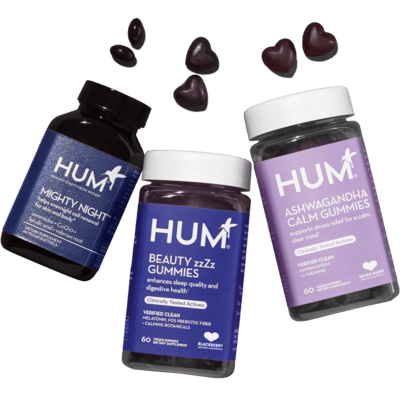The Benefits of Seaweed Are Worth Eating This Slimy Superfood
Yes, you read that right. Turns out, eating seaweed can provide you with several impressive health benefits. Read on to learn more about this slimy superfood.
When was the last time you incorporated seaweed into your meal (or snacks)? Sure, we’ve all dabbled in seaweed. After all, your sushi rolls come wrapped in it and you may even occasionally order the side of seaweed salad.
But is seaweed good for you? It turns out it’s a nutritional powerhouse, and there are many different types of seaweed that you can make an even bigger part of your diet. Here’s more about seaweed nutrition and why you may want to test out each type of this key ingredient, which should be a pantry staple at this point.
The Main Health Benefits of Seaweed
“Seaweed is very nutrient-dense,” Sarah Greenfield, RD, tells me. “First, it’s incredibly rich in iodine, which supports the health of your thyroid and metabolism.” She also notes that iodine is hard to find in other foods, but is abundant in seaweed.
Supporting thyroid health is really seaweed’s claim to fame, and one serving of iodine in a seaweed salad is pretty much all your body needs, according to Gaby Vaca-Flores, RDN, CLE, the education specialist at HUM. “In the ocean, seaweed absorbs iodine, a mineral that helps thyroid glands produce hormones,” Vaca-Flores says. And there’s more when it comes to thyroid health and seaweed. “In addition, seaweed contains tyrosine, an amino acid that works with iodine to make thyroid hormones,” she adds.
You can also count on seaweed for good gut health. It’s a solid source of fiber, which is of course important for regular movement of food through the gut, as well as blood sugar balance, Vaca-Flores says. The superfood also is key for supporting the growth of good bacteria, a win for your digestive and immune system (much of which exists in your gut). “Seaweed can help nurture the growth of good gut bacteria by providing a gut-friendly sugar called sulfated polysaccharides.” says Vaca-Flores.
Seaweed is also a rich source of many other vitamins and minerals while being low in calories, making it a good nutrient-dense option to add to recipes. Greenfield recommends eating seaweed daily, or at least as often as possible.
Here are six types of seaweed to look for on the shelves of your grocery store. Also listed are seaweed’s many benefits and how to prepare it.
Top 6 Types of Seaweed
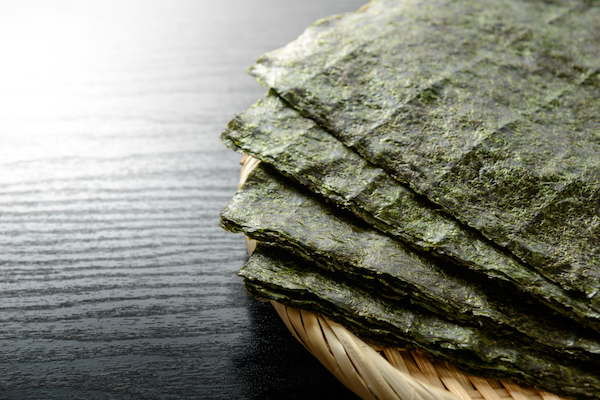
Nori
You’re probably most familiar with this type of seaweed since it’s the kind used to wrap sushi rolls. In recent years, it’s been sold in small, flavored sheets as a low-calorie snack. (Personally, I prefer to buy the larger sheets; it’s cost-effective and requires less plastic packaging. Win, win!)
Indeed, a large sheet of nori contains only five calories but can boast iodine, potassium, magnesium, calcium, iron, zinc, and vitamins A, C, and B12.
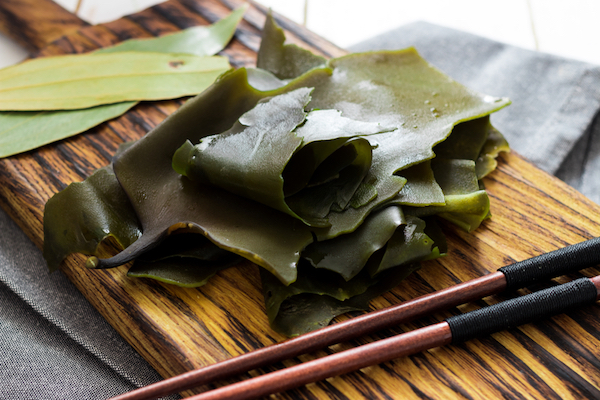
Kombu
Consider this kelp a digestion miracle worker. Kombu contains the alpha-galactosidase enzyme which helps to break down heavy starches in beans. For that reason, you can actually cook your dried beans with a piece of kombu in the pot to make them easier to digest. (In other words, you’ll be less gassy.)
Then, kombu has the highest concentration of iodine among all seaweeds. Again, these levels are ideal for hormone health. Kombu comes in large pieces, so just cut off a piece with kitchen scissors as needed. In addition to cooking your beans with it, you can also add it when cooking soups and bone broths.
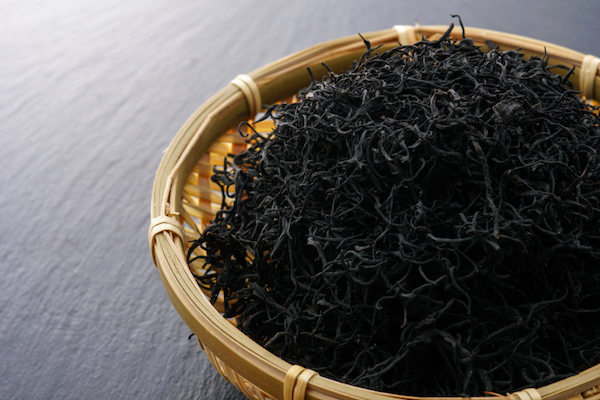
Hijiki
These fine small strands are rich in iron which plays a central role in helping transport oxygen throughout our bodies and contributes to overall energy levels. Hijiki also contains more calcium than milk, meaning it can help keep bones strong. Finally, it’s rich in magnesium, which can promote rest and relaxation in the body. To prepare it, simply soak one part dried hijiki in three parts water for 30 minutes. (As a tip, it’ll grow to be three times the size when ready.) Drain and rinse before adding to a salad or prepared grains for a nutritious boost.
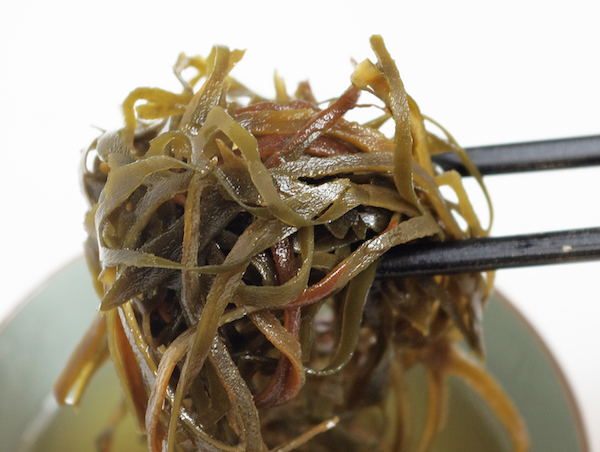
Arame
Arame is known for its long fine strands—almost like angel-hair pasta from the sea. It’s also mild and sweet in flavor. Arame is rich in vitamin A, which encourages cell growth and repair. It’s also packed with lignan, a powerful antioxidant with anti-inflammatory benefits. Soak arame in water before rinsing and adding to stir fry or salads.
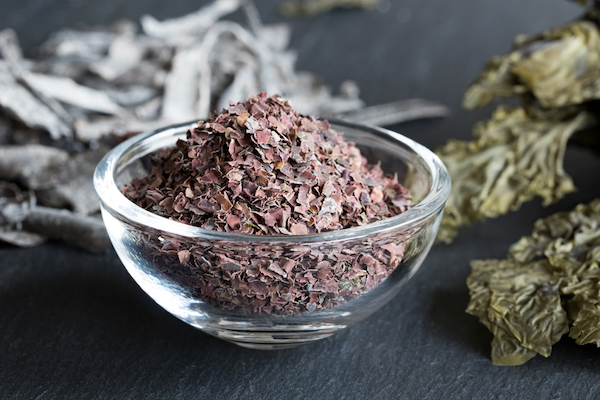
Dulse
This type of seaweed has a unique red color and was a staple in Icelandic diets dating back to 961 AD! Dulse is rich in vitamin B12, which makes it ideal for vegans and vegetarians. You can buy dulse in larger pieces or in small flakes as pictured above. Try sprinkling dry flakes over your salad for a little crunch, or adding to popcorn or nuts with furikake for a savory treat.
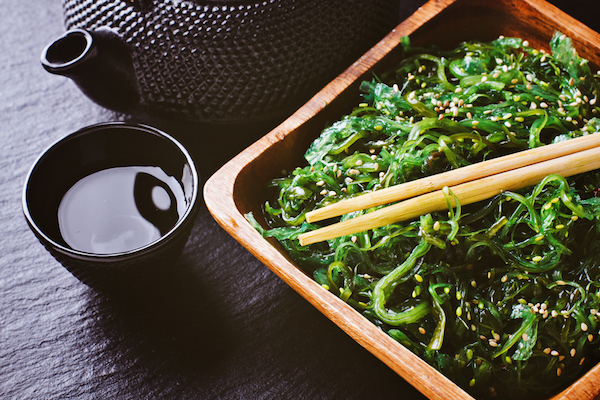
Wakame
If you’ve ever ordered a seaweed salad at a restaurant, it was probably wakame. A study in Japan found that a specific pigment in wakame, called fucoxanthin, can actually help the body burn stored fat. Because seaweed is also naturally low in carbs, wakame is an interesting pairing for anyone on a ketogenic diet.
To prepare your own seaweed salad at home, soak dried wakame in water for five minutes. Drain, rinse, and mix with rice vinegar, soy sauce, and sesame oil. Garnish with sesame seeds for extra crunch. Yum!
The Best Ways to Boost Your Seaweed Intake
You can start boosting your seaweed intake by buying plain or toasted sheets of seaweed—Vaca-Flores recommends looking for nori, which might be easiest to find at your local grocery store. “You can crumble a sheet of seaweed over your favorite soup, salad, rice bowl, or savory snack of choice,” Vaca-Flores says. And then, another nutrient-rich (and delicious) way to incorporate it into your meals would be making DIY sushi rolls at home.

Want to Make a Sustainable Skincare Switch? Try Plant-Based Ingredients

How to Hydrate Your Skin Like a K-Beauty Pro

These Overnight Beauty Treatments Take Beauty Sleep to a Whole New Level

